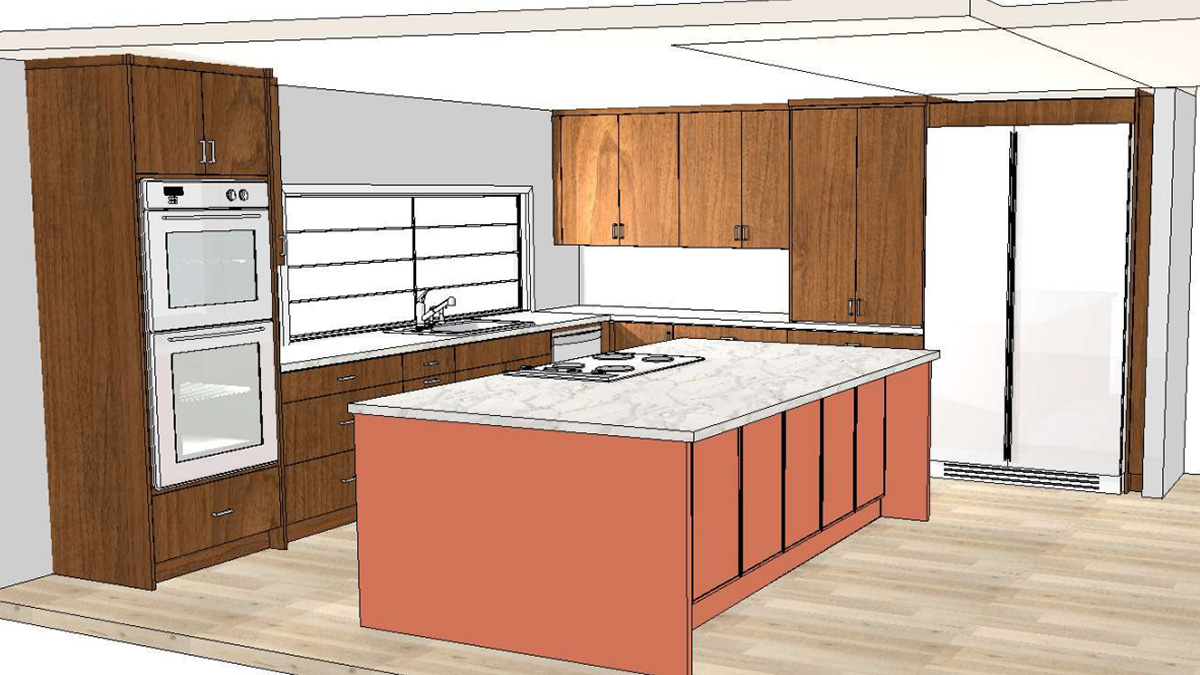How to plan your Kitchen Layout
Today it’s time to jump into video 2 of our 5-part video series on how to plan a kitchen remodel, continuing with today’s topic which is “How to plan your kitchen layout”.
There is a very big secret that kitchen designers use on how to create a functional kitchen for you and your family. Make sure to watch the entire video to learn our kitchen planning secret and stick around to the end to find out where you can get your free kitchen planner blueprint to download and start planning your own kitchen remodel.
When planning your footprint there are a lot of aspects to consider which are unique to your family. For example, in video 1 we’ve talked about budget. Your kitchen footprint and your budget go hand in hand. If you change your footprint in terms of moving your range or your refrigerator, now you have to expand your budget for additional plumbing and electrical work. Keep in mind moving appliances in your footprint will always drive up the budget. And so does moving a wall! I know with HGTV it seems like every remodel needs a wall removed but have you every priced it out before? Get ready to hire a structural engineer to draft the prints up, do the jobsite visit and calculate the replacement beams for your contractor and to get the permit. Usually, I recommend to add about 5-7k to their budget on removing a wall. And this will widely depend on the area you live in.
Think about what you want to improve and how this can be achieved. For example, if your current layout calls for a slide in range or cooktop in your island and you really don’t like your downdraft venting, how could you change your footprint to improve this situation? Well, the easiest thing would be to install a ceiling mounted vent hood, but does your house plan allow for this application? Do you have a second-floor right above the kitchen that will not allow for a vent to run straight out of your ceiling and roof? What or solution is there? Now you can look on moving your cooking station against a wall and hopefully it’s an exterior wall so you could vent straight to the outside.
However you change your kitchen layout, there is a well-known little trick that kitchen designers and architects use to confirm the planed footprint will be functional and that is the kitchen triangle. You may have heard of it, but I will give you all the inside scoop of how to use the triangle for planning your kitchen footprint successfully.
Initially the pioneer work of optimizing kitchen layouts and starting the idea of a kitchen triangle was begun in the 1920s by Lillian Moller Gilbreth, an industrial psychologist and engineer, who used research on motion savings to create better living situations.
Here are the kitchen triangle principles to follow for a functioning kitchen layout:
No leg of the triangle should be less than 4 feet (1.2 m) or more than 9 feet (2.7 m).
The sum of all three sides of the triangle should be between 13 feet (4.0 m) and 26 feet (7.9 m).
Cabinets or other obstacles should not intersect any leg of the triangle by more than 12 inches (30 cm).
If possible, there should be no major traffic flow through the triangle.
A full-height obstacle, such as a tall cabinet, should not come between any two points of the triangle.
Besides the work triangle itself, there are several rules of thumb to consider when planning a kitchen:
Work aisles should be no less than 42 inches (110 cm) for one cook, or 48 inches (120 cm) for multiple cooks.
A sink should have a clear counter area of at least 24 inches (61 cm) on one side, and at least 18 inches (46 cm) on the other side.
A refrigerator should have a clear counter area of at least 15 inches (38 cm) on the handle side; or the same on either side of a side-by-side refrigerator; or the same area on a counter no more than 48 inches (120 cm) across from the refrigerator.
A stove or cooktop should have a clear 15 inches (38 cm) area on one side, and at least 12 inches (30 cm) on the other side.
At least 36 inches (91 cm) of food preparation area should be located next to the sink.
In a seating area where no traffic passes behind the diner, allow 32 inches (81 cm) from the wall to the edge of the table or counter; if traffic passes behind the diner, allow 44 inches (110 cm).
Please remember that these are principles to you guide you to creating a functional kitchen layout, but not every rule can always be achieved and that is ok.
